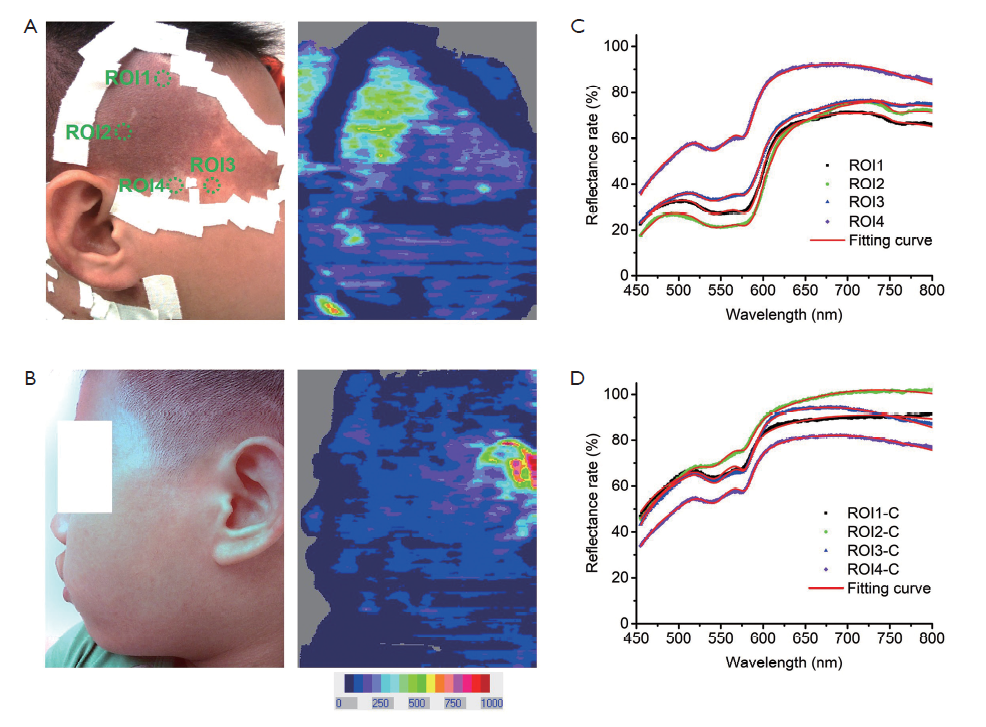Monitoring perfusion and oxygen saturation in port-wine stains during vascular targeted photodynamic
Abstract—Background: Vascular targeted photodynamic therapy (V-PDT) is a safe and effective therapeutic modality for port-wine stains (PWS) by targetedly damaging the dilated and malformed blood vessels. This study aims to monitor and quantify the changes in oxygen saturation (StO2), blood volume fraction (BVF) and perfusion in PWS lesions before and during V-PDT. Methods: Microvascular parameters (i.e., StO2 and BVF) and skin perfusion were measured noninvasively by using diffuse reflectance spectroscopy (DRS) and laser Doppler imaging (LDI), respectively. The change in StO2, BVF and perfusion that occurred in the PWS lesions of 26 patients were monitored and investigated before and during V-PDT in vivo with the systematic administration of the porphyrin-based photosensitizer HiPorfin. Results: The mean StO2 (P<0.05), BVF (P<0.05), and perfusion (P<0.001) in PWS lesions of all subjects significantly increased by 6%, 34%, and 113%, respectively, 3 min after the initiation of V-PDT. The StO2 increased first and fluctuated during V-PDT. The overall trend of BVF change was consistent with the perfusion change. The BVF and the perfusion of PWS lesions increased after the initiation of V-PDT, and then gradually decreased. Conclusions: V-PDT is an effective therapeutic modality in treating PWS. Results showed that LDI and DRS permitted the noninvasive monitoring of the changes in StO2, BVF, and perfusion in PWS lesions during V-PDT, and these methods can be useful in facilitating our understanding of the basic physiological mechanisms during V-PDT.

